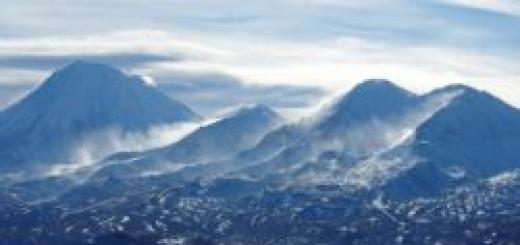Deforestation. Forests play an important role in preserving soil and water, maintaining flora and fauna. In addition, forests are a source of industrial timber, fuel and other products. Nowadays, forests around the world are under threat of degeneration and destruction as a result of increasing human pressure. At the expense of forests, agricultural fields and pastures are expanding, predatory logging continues, forests suffer from fires and air pollution. Of particular concern is the destruction of tropical forests, the average annual percentage of destruction of which reaches 1% of their area. Estimates from the Food and Agriculture Organization (FAO) of 62 countries (representing 78% of the world's tropical forest area) indicate that forests were being lost at a rate of 16.8 million hectares/year during the period.

Deforestation The remaining 800 million hectares of tropical forests are being cut down and destroyed at such a rate that by 2030, according to various estimates, only 200 to 370 million hectares will become shallow. The consequences of the destruction of tropical forests are the extinction of species, soil degradation, decreased runoff in watersheds and increased accumulation of precipitation in water bodies, a decreased buffering role of forest swamps, a decrease in carbon reserves in terrestrial biomass, an increase in CO2 content in the atmosphere, and a decrease in the amount of precipitation. Forests are dying not only in the tropics. Mass disease and death of forests in Europe and North America began due to pollution of the atmosphere, water and soil. As a result of intensive logging, the coniferous forests of Central Russia have been practically destroyed, and the most valuable and accessible forest tracts in Siberia and the Far East are being steadily destroyed. The destruction of northern forests, as well as tropical ones, is caused by changes in climatic conditions, water regime, and soil conditions.

Loss of biodiversity. Destruction of tropical forests Loss of biodiversity. Scientists believe that there are from 5 to 30 million species on Earth, although about 1.7 million have been described. The totality of all species constitutes the Earth's biodiversity. From half to 80% (according to various estimates) of the planet's species live in tropical forests, although the latter occupy only 7% of the Earth's territory. Thus, in the rain forest of Panama on an area of 50 hectares, scientists discovered about 300 species of trees and shrubs; in Malaysia, on the same area, 835 species of trees. Biodiversity decreases towards the North Pole. For example, in the state of Washington, about 40 species of trees grow on 50 hectares, and in Western Siberia there are 56. The destruction of tropical forests has already led to the death of about 6,000 species. Tropical forests mainly belong to poor kingdoms with rapid population growth. These countries are forced to export wood, burn forests in order to build roads and cities, and grow crops. Unfortunately, the soils of tropical owls are very poor; within 23 years they are depleted and deforestation is again required.

Biotechnology Species are dying not only in the tropics. Wherever ecosystems are destroyed or their area is greatly reduced, species disappear. And this is an irreparable loss for the biosphere and humanity. People have learned to use only 0.1% of species. We eat only about 50 species of plants, while 75 thousand plants have edible parts and are much richer in nutrients than the plant foods we currently eat. Plants are not only food, but also building material, a source of energy, and the main part of medicine. Biotechnology also depends on biodiversity: selection from wild plant genes, production of antibiotics from microscopic fungi, production of enzymes from yeasts and bacteria. Biotechnologists hope to create natural fertilizers and pesticides for cultivated plants that are resistant to drought, frost and various diseases.

Examples of the socio-ecological benefits of biological diversity Here are some examples of the socio-ecological benefits of biological diversity: The value of medicines produced globally from wild plants and natural products is approximately US$40 billion per year. In 1960, only one in five children with leukemia had chance to survive. Now four out of five have that chance. This was made possible thanks to treatment with a drug containing active substances found in the tropical forest plant Catharantus, whose homeland is Madagascar. In Asia, by the mid-70s, genetic improvements led to an increase in wheat production by 2 billion and rice by 1.5 billion. USA per year. These results were achieved through the breeding and use of low-growing varieties of grain crops. One gene in Ethiopian barley now protects the entire California barley crop worth $160 million per year from the yellow dwarf virus. By losing the Earth's biodiversity, humanity is losing its future!!!

“Mixed forest zone” - Now forests occupy 30% of the zone’s area. Red fox. Vegetable world. You are standing, little birch tree, in the middle of the valley. Hedgehog. Animal world. Animals of the forests. Pheasant. Below you is a birch tree, silk grass... The average temperature in July is from +16° to +24°C, and in January from -8° to -16°C. The flora of the forests is diverse: “Soft, gentle forest.
"Deforestation" - Tropic Disaster. Forestry and woodworking industry. Make wider use of the experience of different countries in processing wood biomass. The leaders in forest planting today are South Korea and Kenya. Forests play a very important role for our planet. Forest vegetation forms forest resources. Regulation of the gas composition of the atmosphere.
“Forest Zone Russia” - A wonderful decorative tree. Almost half of Russia's territory is occupied by forests. Larch is the pioneer of the forest. Geography lesson. It looks like a spruce (fir has cones that look up). Forests. Linden is cold-resistant and not afraid of shade. Light coniferous forests. They dominate in the southern part of the forest zone. Compiled by: Kurochkina I.V., geography teacher at Oktyabrskaya secondary school, Volosovsky district.
“Forest zone” - On the map of natural zones, the forest zone is shaded ... in color. Five parts. The natural forest area consists of... Natural forest area Start of the test. Three parts. Natural history. The forest zone consists of three parts. The owner of the forest is called... Two parts. Well done! Further. You made a mistake! Right. The owner of the forest is called the bear.
“State of forests” - The standard is 500 linear meters per 1 hectare. The number of relascopic sites in the allotment depends on the area of the allotment and the completeness of the plantings. Study of recreational loads in forests intended for public recreation. Moscow State Forestry University. The combination and analysis of maps is carried out using GeoInformation Technologies (GIS Technologies).
“Geography of Russian forests” - Forests of Russia. Repetition. In the west of the country the length of forests is 1000 km, in the Far East - 3000 km. Taiga. Mixed and broad-leaved forests. Why does the disturbed natural complex of the tundra take so long to recover? General characteristics of Russian forests. Topic study plan. The most extensive, main natural zone of Russia is forests.
1) The importance of forests People take a lot from the forest: materials for construction, food,
medicines, raw materials for the paper industry. Wood, pine needles and
tree bark serves as raw material for many chemical industries
industry. About half of the wood produced comes from
for fuel needs, and a third goes to construction. A quarter of all
the medicines used are obtained from tropical plants
forests Thanks to photosynthesis, forests give us oxygen to breathe,
while absorbing carbon dioxide. Trees protect the air from
poisonous gases, soot and other pollutants, noise. Phytoncides,
produced by most coniferous plants, destroy
pathogenic microorganisms.
Importance of forests
Forests are habitats for many animals, these are the mostveritable treasure troves of biological diversity. They participate in
creating a favorable environment for agricultural plants
microclimate. Forest areas protect the soil from processes
erosion, preventing surface runoff of precipitation. Forest presents
is like a sponge that first accumulates and then gives away
water to streams and rivers, regulates the flow of water from the mountains to the plains,
prevents floods. The deepest river in the world
The Amazon, the forests included in its basin, are considered the lungs of the Earth.
Although forests are a renewable resource, the rate
their cutting is too high and is not covered by the speed
reproduction. Millions of hectares are destroyed every year
deciduous and coniferous forests. Tropical forests that are home to more than
50% of the species existing on Earth used to cover 14% of the planet, and
now only 6%. India's forest areas have shrunk from 22
up to 10% over the last half century. The coniferous forests of the central
regions of Russia, forest tracts in the Far East and Siberia, and in
Swamps appear in places where clearings are made. Valuable pine and
cedar forests.
2) Damage caused to the planet by deforestation
Burning forests causes carbon monoxide pollution, whichmore is emitted than absorbed. Also, when clearing forests,
carbon that accumulates in the soil under trees is released into the air. This contributes
about a quarter in the process of creating the greenhouse effect on Earth.
Many areas left without forest as a result of deforestation or fires
become desert as the loss of trees causes thin
The fertile layer of soil is easily washed away by precipitation. Desertification
causes a huge number of environmental refugees - ethnic groups for
for whom the forest was the main or only source of subsistence.
Many inhabitants of forest areas disappear along with their homes.
Entire ecosystems are destroyed, plants of irreplaceable species are destroyed,
used to obtain medicines, and many valuable to humanity
bioresources. More than a million species living in tropical
forests, is endangered. Soil erosion developing
after cutting down, leads to floods, since nothing can stop
streams of water. Floods are caused by disruption of the groundwater level, as
the roots of trees that feed on them die. For example, as a result of extensive
deforestation at the foot of the Himalayas began to suffer from large floods
every four years Bangladesh. Previously, floods occurred no more than twice
once every hundred years.
3) Methods of cutting down
Forests are cut down for mining, timber,when clearing territory for pastures to obtain land
agricultural purposes. Forests are divided into three groups. First -
These are forest areas that are prohibited from logging and play an important ecological role.
role, being nature reserves. The second group includes forests
limited operation, located in densely populated areas, for their
Timely restoration is strictly monitored. The third group is
so-called production forests. They are completely knocked out and then
are re-seeded. There are several types of logging in forestry:
Final felling Felling of this type is harvesting
called mature forest for timber. They can be selective
gradual and continuous.
Methods for cutting down
When clear cutting occurs, all trees are destroyed.with the exception of the testes. With gradual
the cutting process is carried out over several
techniques. With the selective type, only
individual trees according to a certain principle, and in
Overall the area remains forested. Chopping
plant care This type includes
cutting down plants to leave
inappropriate. Destroy the plants of the worst
quality, while simultaneously implementing
thinning and clearing the forest, improving it
lighting and nutritional provision
substances from the remaining more valuable trees.
This makes it possible to increase the productivity of the forest, its
water-regulating properties and aesthetic
quality. Wood from such fellings is used as
technological raw materials.
4) Measures to eliminate damage caused by deforestation
In order to stop the process of forest destruction, regulations should be developedwise use of forest resources. The following must be adhered to
directions:
conservation of forest landscapes and its biological diversity;
maintaining uniform forest management without depleting forest resources;
training the population in the skills of caring for the forest;
strengthening at the state level control over the conservation and use of forests
resources;
creation of forest accounting and monitoring systems; improvement of forest legislation,
In order to reduce damage from logging, it is necessary:
Increase areas for planting new forestsExpand existing and create new protected areas, forests
reserves.
Implement effective measures to prevent forest fires.
Carry out measures, including preventive measures, to combat diseases and
pests.
Conduct selection of tree species that are resistant to environmental stress.
Protect forests from the activities of mining companies
fossils.
What people can do to save forests:
use paper products rationally and economically;buy recycled products, including paper. She
marked with the recycled sign;
green the area around your home;
replace trees cut down for firewood with new seedlings;
draw public attention to the problem
Description of the presentation by individual slides:
1 slide
Slide description:
Ecological problems. Deforestation Performed by: Dmitry Zhdankin 11th grade student MBOU Shpikulovskaya secondary school Tambov region
2 slide
Slide description:
Humanity today faces many environmental problems. They are partially related to human life. The most important problem is deforestation. N
3 slide
Slide description:
The forest, as you know, gives us pure oxygen, wood, berries and mushrooms. But now deforestation occurs quite often in Russia, Africa and Latin America.
4 slide
Slide description:
These forests are distinguished by the high quality of the wood growing there. Deforestation is occurring at a faster rate than planting. Today there are quite a lot of poachers hunting for valuable tree species.
5 slide
Slide description:
Consequences of deforestation Massive deforestation entails catastrophic consequences. The lack of vegetation leads to rapid erosion, which causes devastating floods and mudslides. On the Yangtze River, for example, floods increased significantly after the deforestation of the coastal slopes that retained water from monsoon rains. A yellowish dust cloud now hangs over Beijing in the spring and summer - this seasonal phenomenon is also provoked by too intensive logging within the country. Clouds of dust pollute river mouths and cause severe damage to coral reefs. In addition, deforestation can accelerate global warming, especially if it is accompanied by fires and burning, which farmers often resort to to clear space for crops.
6 slide
Slide description:
Consequences of deforestation Ecological deterioration in the deforestation area Soil corrosion Animals and birds have nowhere to live and breed Desertification
7 slide
Slide description:
Protection measures To counteract the destruction of forests, the Forest Stewardship Council was created in 1993. This public organization includes 1,400 wood processing enterprises, as well as environmental protection associations and representatives of indigenous peoples living in the forest belt. The council issues certificates that guarantee that the timber sold for sale comes from forests where harvesting limits have not been exceeded. However, forest defenders place their main hopes not on administrative measures, but on the fact that over time a “formula” for interaction between man and forest will be developed. The first steps in this direction are the creation of natural areas where people can live, building houses, hunting, and collecting firewood. Oddly enough, a forest can only be safe if it becomes inhabited.
8 slide
Slide description:
Possible measures to combat deforestation: establishing the procedure for ownership, use and seizure of forests; disposal of a unified state forest fund; establishing the procedure for assigning forests to groups and categories of protection; establishing procedures for the use, reproduction, protection and protection of forests; establishment of unified forest management systems for the country, forest accounting, procedures for maintaining the state forest cadastre and forest monitoring;
Slide 9
Slide description:
Rational use of forest resources involves comprehensive processing of wood with full use of waste. Reducing the volume of deforestation in accordance with their growth. Intensifying reforestation work. Partial replacement of wood with new structural materials.
The forest is our wealth!
Let's save it for posterity!

Forest - the lungs of the planet
Deforestation is an environmental problem. Scientists have long been talking about the harmful effects of technological progress on nature. Climate change, melting ice, and a decrease in the quality of drinking water have a very negative impact on people’s lives.
Environmentalists around the world have long sounded the alarm about pollution and destruction of nature. One of the most important environmental problems is deforestation. Forest problems are visible especially in civilized states. Environmentalists believe that deforestation leads to many negative consequences for the Earth and humans.

Without forests there will be no life on Earth, this needs to be understood by those on whom their preservation depends. However, wood has long been a commodity that is expensive. And that is why the problem of forest destruction is so difficult to solve.
Perhaps people simply don’t realize that their entire lives depend on this ecosystem. Although everyone has long revered the forest, often giving it magical functions. He was a breadwinner and personified the life-giving power of nature. They loved him, they treated the trees with care, and they responded to our ancestors in the same way.

Forests of the planet
In all countries, in every corner of the world, massive deforestation is taking place. The problem with the forest is that with the destruction of trees, many more species of plants and animals die. The ecological balance in nature is disrupted.
After all, a forest is not only trees. This is a well-coordinated ecosystem based on the interaction of many representatives of flora and fauna. In addition to trees, shrubs, herbaceous plants, lichens, insects, animals and even microorganisms are of great importance in its existence.

- Despite massive deforestation, forests still occupy about 30% of the land area. This is more than 4 billion hectares of land. More than half of them are tropical forests.
- However, the northern, especially coniferous, massifs also play a great role in the ecology of the planet. The countries richest in greenery in the world are Finland and Canada.
- Russia contains about 25% of the world's forest reserves. The fewest trees left in Europe. Nowadays forests occupy only a third of its territory, although in ancient times it was completely covered with trees. And, for example, in England there are almost none left; only 6% of the land is given over to parks and forest plantations


Meaning of forest
- It provides oxygen to humanity. It is no coincidence that they say that forests are the lungs of the planet. And it not only produces oxygen, but also partially absorbs chemical pollutants, purifying the air. A wisely organized ecosystem accumulates carbon, which is important for the existence of life on Earth. It also helps prevent the greenhouse effect, which is increasingly threatening nature.
- The forest protects the surrounding area from severe temperature changes and night frosts, which has a beneficial effect on the condition of farmland. Scientists have found that the climate is milder where most of the territory is overgrown with trees.


The benefit of forests for crops also lies in the fact that it protects the soil from washing out, wind drift, landslides and mudflows. Areas overgrown with trees prevent the advance of sand.
Forests also play a huge role in the water cycle. It not only filters it and stores it in the soil, but also helps in the spring during floods to fill streams and rivers with water, preventing the area from becoming swamped.
Forests help maintain groundwater levels and prevent flooding. Absorption of moisture from the soil by the roots and intensive evaporation by the leaves helps avoid drought.

What damage does deforestation?
- The environmental problem of the disappearance of the so-called “lungs” of the planet is already worrying many. Most people believe that this threatens to reduce oxygen supplies. This is true, but this is not the main problem.
- The scale that deforestation has now reached is astounding. Satellite photos of former forest areas help to visualize the situation.

What can this lead to: the forest ecosystem is destroyed, many representatives of flora and fauna disappear;
a decrease in the amount of wood and plant diversity leads to a deterioration in the quality of life of most people;
the amount of carbon dioxide increases, which leads to the formation of the greenhouse effect;
trees no longer protect the soil (washing out the top layer leads to the formation of ravines, and the lowering of the groundwater level causes the appearance of deserts);
soil moisture increases, causing swamps to form; Scientists believe that the disappearance of trees on mountain slopes leads to the rapid melting of glaciers.
Researchers estimate that deforestation causes damage to the global economy worth up to $5 trillion a year.
What happens after cutting down?
- In open space, completely different conditions are created. Therefore, a new forest grows only where the deforestation area is not very large.
- What prevents young plants from growing stronger: The level of illumination changes. Those undergrowth plants that are accustomed to living in the shade die.
- Different temperature regime. Without tree protection, sharper temperature fluctuations and frequent night frosts occur. This also leads to the death of many plants.
- An increase in soil moisture can lead to waterlogging. And the wind blowing moisture from the leaves of young shoots does not allow them to develop normally. The dying of roots and the decomposition of the forest floor release many nitrogenous compounds that enrich the soil.
- However, those plants that need just such minerals feel better on it. Raspberries or fireweed grow fastest in clearings; birch or willow shoots develop well.
- Therefore, restoration of deciduous forests proceeds quickly if people do not
- interferes with this process. But coniferous trees grow after being cut down
- very bad, since they reproduce by seeds, for which
- there are no normal development conditions. Such negative consequences have
- deforestation. The solution to the problem - what is it?

Solving the problem of deforestation.
- Environmentalists offer many ways to preserve forests. Here are just a few of them:
- transition from paper to electronic media,
- waste paper collection and separate waste collection will reduce the use of wood for paper production;
- creation of forest farms on which trees of valuable species with the shortest maturation period will be grown;
- a ban on logging in environmental protection zones and tougher penalties for this;
- increasing the state duty on the export of wood abroad to make it unprofitable.

The disappearance of forests does not yet concern the average person. However, many problems are associated with this. When all people understand that it is forests that provide them with a normal existence, perhaps they will treat trees more carefully.
Each person can contribute to the revival of the planet's forests by planting at least one tree.











